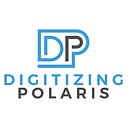Uh-Oh or Oh Wow? What Has OpenText Done with Documentum?
Promises are easy to make, but harder to keep.

Forty-five days before OpenText took ownership of EMC’s Enterprise Content Division (ECD) — Dell technically owned it at the time — OpenText executive vice president of engineering Muhi Majzoub, stood before a crowd of ECD’s most passionate users.
“We are committing to every customer and every partner that we will support, enhance and innovate on top of the entire portfolio of products that came with the acquisition,” he said.
Majzoub then went on to name the products — Documentum Content Server, D2, xCP, WebTop, InfoArchive, Documentum vertical apps, LEAP, InfoArchive, and more.
Of course, his comments were received with some skepticism, but he seems to have stayed true to his word.
What Have You Done For Me Lately?
Speaking at a coffee talk discussion this Spring, Majzoub gave a progress report that revealed working code for an integration between Documentum’s Life Sciences Suite, OpenText’s iHub intelligence engine and its Big Data Analytics Engine.
What exactly does this represent to the large number of drug makers who use Documentum? They get a near-time dashboard to view drug status and approval from which to guide their activities. The significance of this can’t be understated for two significant reasons:
1) For pharmaceutical companies it can mean gaining a competitive advantage that lasts for years because getting your products in front of doctors first, so that they can then prescribe them to patients in dire need, is game-changing.
2) For patients to whom new therapies might represent a cure or relief from symptoms, it could be a day-saver, a life saver or improve quality of life sooner.
Smart and Easy
It is important to note that these types of software, workflow, and content solutions, such as the Life Sciences Suite, were not built to take shortcuts through clinical and regulatory processes. Instead they make them more efficient and facilitate collaboration while adhering to regulatory and compliance standards.
EMC ECD users barely dared to dream about such solutions because EMC wouldn’t have given up the funding to build such things.
To be fair, iHub and the Big Data Analytics engine already existed in OpenText’s portfolio, so it’s the product integration, not the innovation that had to be built. On the other hand, a software company that has multiple uses for these products has a better business justification for building them, and building them well, in the first place.
You can look for similar integrations with other Documentum vertical industry solutions for one big reason; it doesn’t make sense not to build them.
From Graveyards To Diamond Mines
Majzoub also highlighted that OpenText has delivered a new release of InfoArchive. What’s worth noting here is that OpenText sees InfoArchive not only as a place to inexpensively offload data that must be retained (for regulatory reasons) to cheaper , readily-accessible storage, but also as a rich data lake from which historical context and insights can be drawn.
Big content will find a home, but instead of it being a graveyard, it will become a diamond mine.
A Better View
Once upon a time ago EMC Documentum users were supposed to be able to leverage OpenText’s Brava Viewer. That never happened in a meaningful way.
“We were competitors,” Majzoub explained. Needless to say, that’s no longer the case. Documentum D2 users can access Brava integration now. Microservices architecture has been brought to D2 as well.
Uh-Oh or Oh Wow?
While this list isn’t all inclusive, it’s clear that much has been done in a short period of time.
And stay tuned… OpenText has a big announcement coming at Enterprise World next week. We’ll cover it here. See you Tuesday morning, if we don’t hear from you first.

